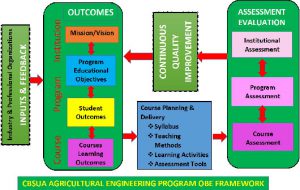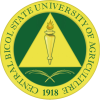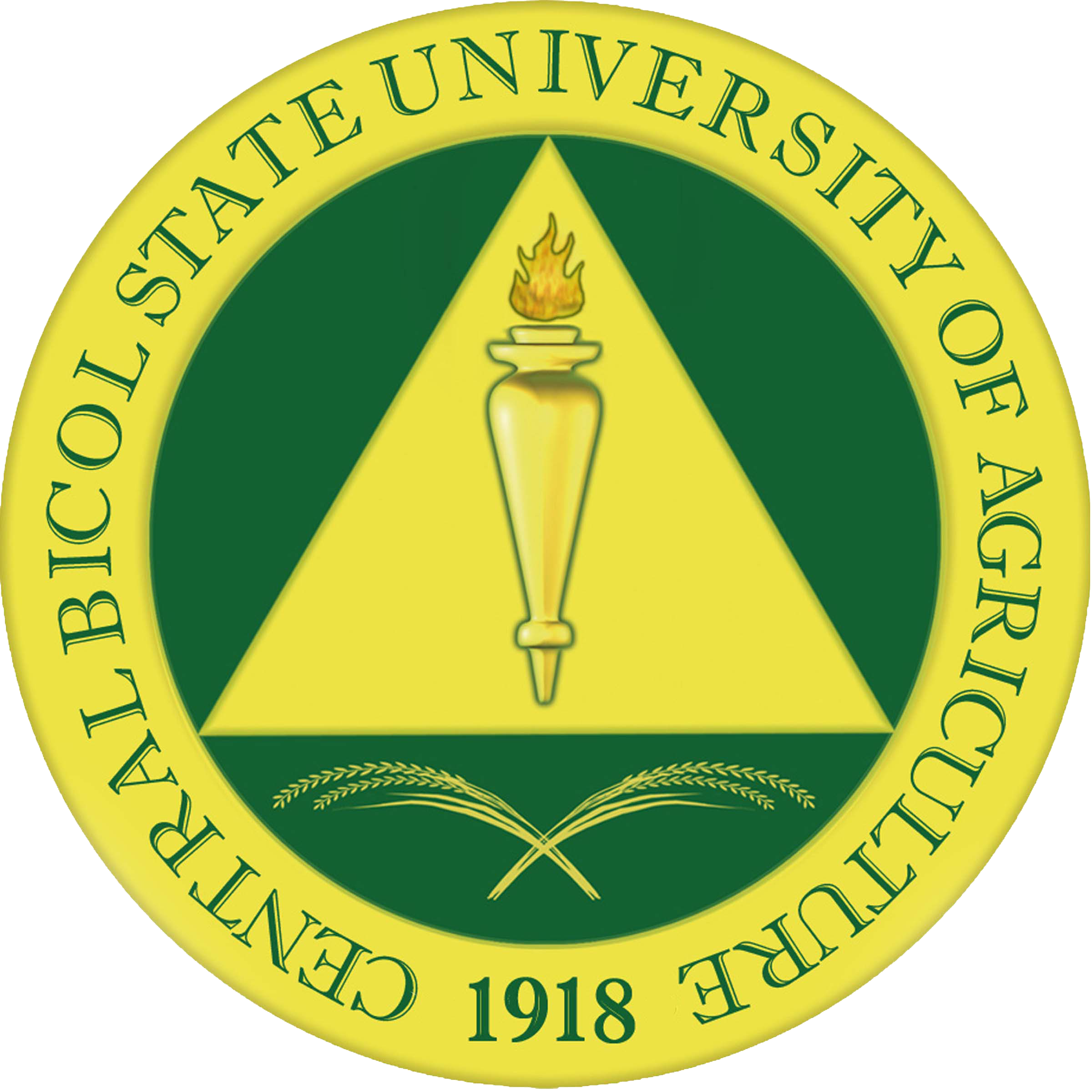CBSUA DEPARTMENT OF AGRICULTURAL ENGINEERING OUTCOME-BASED EDUCATION
BACKGROUND
BSAE Program is governed by Commission on Higher Education(CHED) through CMO 37, s. 2007 entitled,“Revised Policies and Standards for the Bachelor of Science in Agricultural Engineering Program.” The CMO 37, s. 2007 sets the requirements for program administration, faculty; curriculum; library; land; facilities and equipment; admission, retention and residency; graduate placement; and faculty development. The CMO 37, s.2012 states the policies, standards and guidelines in the establishment of an outcome-based education (OBE) system in HEIs, and to keep pace with the demands of global competitiveness.
Agricultural Engineering is a sub-discipline of engineering based on the application of agricultural science, mathematics and engineering principles for the production and primary processing of agricultural raw materials for food, feed, fiber, timber and energy as well as for the development of technologies for natural resources, environmental and waste management. Agricultural engineering covers such areas as land development;irrigation and drainage; crop production and machinery; energy; agricultural buildings and structures; post harvest and processing technologies; and natural resource, environment and waste management.
The Washington Accord (WA) 1989 prescribes that undergraduate engineering programs must be in OBE as one of the requirements for international accreditation of the engineering programs and international recognition of the graduates of these programs. WA is an agreement between bodies responsible for accrediting engineering programs in each of the 21 signatory countries.
THE OBE FRAMEWORK
Outcome-Based Education (OBE) is a new paradigm in engineering education that is being pursued in the United States and other countries, including the Philippines. OBE is a student-centered learning philosophy that focuses on empirically measuring student performance called “outcomes” (Felder & Brent, 2003). Motivations for implementing OBE can be “to improve learning (Biggs,2003) or “to meet accreditation needs” (Felder & Brent, 2003). The OBE Framework as shown in Figure 1 is not an end but a process of continuously improving education. The outcomes are first defined and then the design of the curriculum including the teaching and learning activities and assessment tasks follows.In defining the outcomes, a hierarchy was followed, with the university vision-mission at the top. The expected graduate attributes (EGA) which are characteristics or qualities of students of a university upon graduation were identified based on the university vision-mission.
To achieve students’ attributes, the Agricultural Engineering program in Central Bicol State University of Agriculture defined a set of program or student outcomes(SOs) which address specific EGAs. Related to the SOs are the Program Educational Objectives (PEOs) which are broad statements that describe what graduates are expected to attain after graduation. Assessment of PEOs shall be done after a few years of graduation while achievement of SOs shall be done immediately after graduation.
Bachelor of Science in Agricultural Engineering Program follows a curriculum with a set of courses which a student must complete or pass in order to earn the degree. In OBE, the course learning outcomes of each course is at the bottom level in the hierarchy of outcomes. To assure the achievement of EGAs and SOs,the course learning outcomes must be aligned with specific EGAs and SOs. Since outcomes cascade from top to bottom,the curriculum design also follows the same direction from program to course level. Delivery of instruction and assessment to evaluation, on the other hand,is carried out from bottom to top. The course is the basic element which comprises a program. Thus, assessment of achievement of outcomes in the course level must be carried out first to evaluate how effective are the teaching-learning activities and assessment tasks in achieving the learning outcomes. Program assessment will then follow to measure the achievement of EGAs and SOs. To close the loop of the continuous quality improvement (QCI) process of OBE, changes or adjustments in the curriculum at the program and/or course level shall be implemented.

Figure 1. The CBSUA Agricultural Engineering Program OBE Framework.



